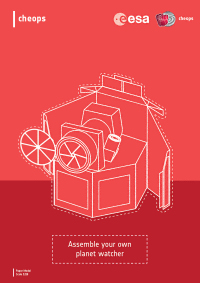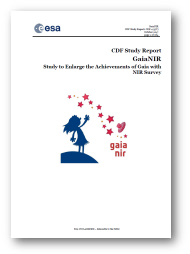ESA Science & Technology - Publication Archive
Publication archive
Publication archive
We present a 3D orbit viewer application capable of displaying science data. 3DView, a web tool designed by the French Plasma Physics Data Center (CDPP) for the planetology and heliophysics community, has extended functionalities to render space physics data (observations and models alike) in their original 3D context. Time series, vectors, dynamic spectra, celestial body maps, magnetic field or flow lines, 2D cuts in simulation cubes, etc, are among the variety of data representation enabled by 3DView. The direct connection to several large databases, the use of VO standards and the possibility to upload user data makes 3DView a versatile tool able to cover a wide range of space physics contexts. The code is open source and the software is regularly used at Masters Degree level or summer school for pedagogical purposes. The present paper describes the general architecture and all major functionalities, and offers several science cases (simulation rendering, mission preparation, etc.) which can be easily replayed by the interested readers. Future developments are finally outlined.
 |
Print out and build a paper model of CHEOPS, the CHaracterising ExOPlanet Satellite.
CHEOPS is a space science mission dedicated to the study of known exoplanets orbiting bright, nearby stars. It will use the technique of ultra-high precision photometry to measure accurate sizes of a large sample of Earth to Neptune-sized planets. By combining the accurate sizes determined by CHEOPS with existing mass measurements, it will be possible to establish the bulk density and composition of the planets; these, together with information on the host stars and the planets' orbits will be used to determine the planets' formation and evolutionary history.
CHEOPS is a small satellite with a total launch mass of approximately 300 kg and dimensions of 1.55m (height) × 1.49m (width, measured from solar array edge to edge) × 1.4m (depth).
The dark colours used in this paper model are representative of the true colours of the various spacecraft components. The paper model's scale is 1:15 when printed on DIN A4 paper.
CHEOPS is a partnership between the European Space Agency (ESA) and Switzerland.

Document reference: CDF-175(C)
This document is the assessment study report for GaiaNIR (Gaia Near Infra-Red), which was one of the proposals received in response to the 2016 Call for New Science Ideas in ESA's Science Programme. Three mission concepts were selected as a result of this call, and GaiaNIR was one of them.
The GaiaNIR proposal encompasses:
- Enlarging the astrometric achievement of Gaia to the astronomical sources which are only visible in Near Infra-Red
- Maintaining the accuracy of the Gaia optical reference frame
- Improving the star parallax and proper motion accuracy by revisiting the astronomical sources a number of years after Gaia.
Corrigendum:
This document was updated on 8 June 2018, with minor edits made to page 249 according to the final version of the document. The concerned lines are indicated by a blue band on the side of that page.
